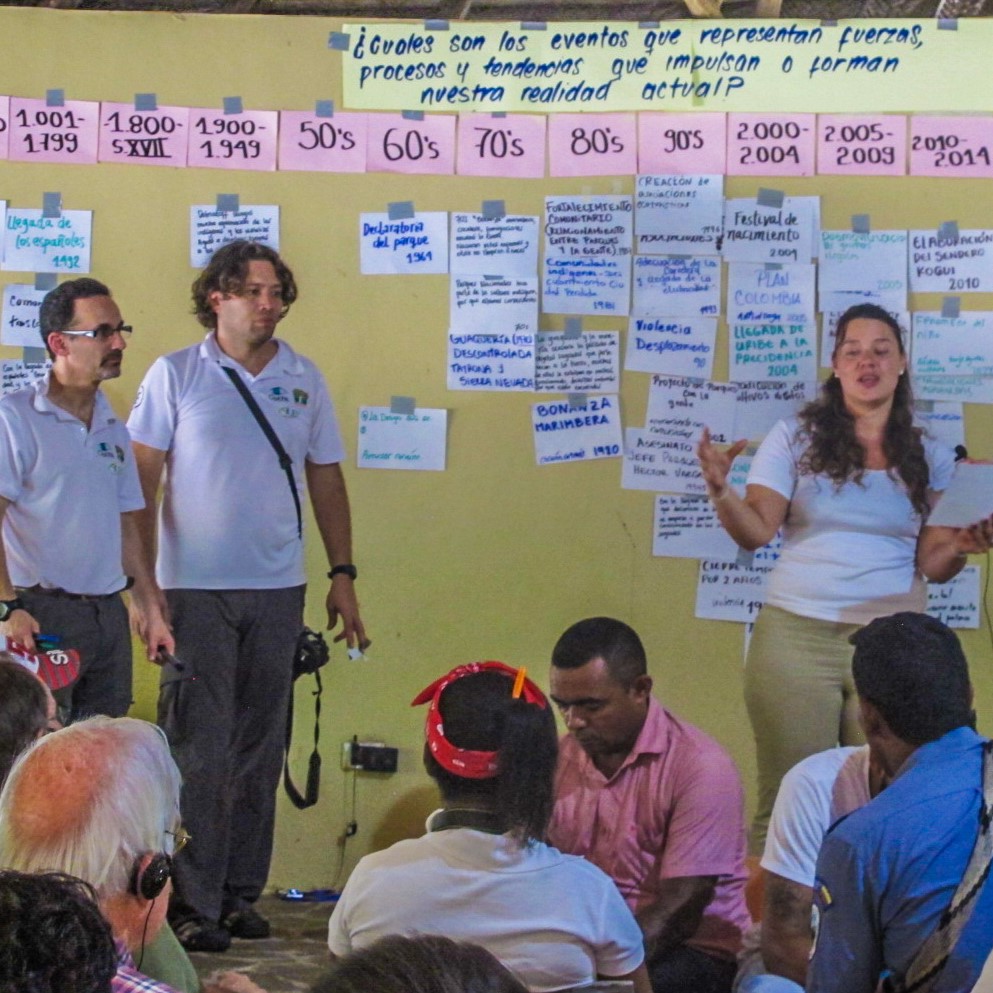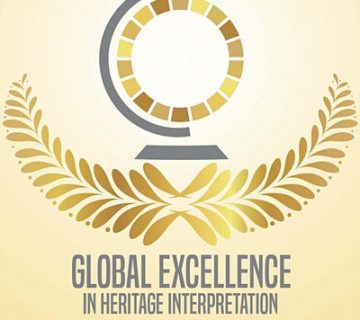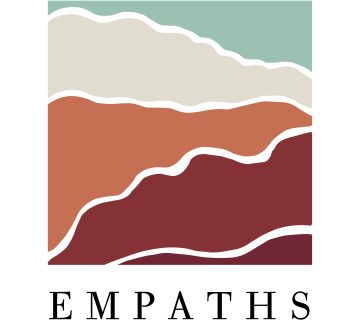This methodology can create space to articulate and honour community-valued notions of heritage, as the heart of any interpretation strategy.
When the powerful write history
Normally the spoils of victory go to the winners, but not at the Battle of Little Bighorn, Wyoming, USA. In 1876 Lt. Col. George Armstrong Custer led the Seventh Cavalry into a battle with Cheyenne and Sioux warriors without knowing their numbers, without respecting orders to wait, without knowing the landscape, and without reinforcements. According to some historians the brash, impatient, and overconfident Custer could not have mounted a worse battle plan. Yet, despite the complete annihilation of him and his 263 men, it was Custer who reveled posthumously in his idolised “Last Stand” through movies, posters, and even lunchboxes. The battle site itself regaled his name as the Custer Battlefield National Monument.
The imposed narrative and consequent interpretation of one dominant culture over less powerful ones have replicated like a virus time and again across continents. Time and again local communities find themselves peering helplessly at interpretations that they did not share in creating, that they do not share in telling, and ultimately feel alienated even on their own lands and in the face of their own heritage.
Times are changing, though, and indeed the US National Park Service in 1991 renamed the site of Custer’s bloody ineptitude the Little Bighorn Battlefield National Monument where now Native American participants, both those who defeated Custer and those who aided him, have been honored and their stories told. While better late than never, the onus on the interpretive community is not to wait until late or never to involve local heritage communities in site interpretation, rather that should be a first step. This article then shares one tool to do precisely that: the community-based interpretive framework.
Community health and heritage
Today, while top-down, science-first, expert-driven interpretation still abounds around the world, awareness of the importance of local ownership for heritage management is growing among interpreters. When local communities feel ownership of their own heritage, they tend to be more active managers, be more deeply engaged, protective, and proud. Indeed, when locals can craft and tell their heritage stories, they may develop a more positive and proactive self-identity, self-reliance, and self-worth, which is precisely what ISIS tried to crush by destroying ancient heritage monuments in Iraq and Syria. But that ownership does not arise from a generous act of government, rather it comes from full involvement in defining heritage meanings that later endow interpretation for the visiting public. As one local leader from Nyanza, Rwanda said about decolonising his own heritage from British rule in an article by anthropologist Annalisa Bolin: “We cannot own what we do not understand… we cannot own [anything] when we are not part of the entire process of management and planning.” Understanding and ownership then first arise when communities assign their meanings to their heritage.
Interpretive framework history
The interpretive framework builds consensus among diverse heritage stakeholders about meanings related to heritage and its core elements to interpret it. Interpreters do not consult communities so that the former can invent themes and meanings, rather they facilitate participatory workshops to arrive at these meanings which they capture in summary form on a single sheet of paper, easy to read and understand. The methodology has been evolving since 1998 when the NGO RARE Center for Tropical Conservation worked with Pico Bonito National Park in Honduras to produce its public use plan. The local park team with RARE facilitators produced seven disconnected themes, becoming the very first interpretive framework. Later, RARE adopted a consensus-building workshop facilitation methodology innovated by the Institute for Cultural Affairs, a global grassroots development non-profit, as part of its Technology of Participation toolbox. As such they hierarchically ordered local themes to a single overarching theme for protected areas in Mexico, Honduras, Guatemala, and Indonesia.
After RARE, the NGO PUP Global Heritage Consortium continued to refine the methodology applying it in the US, Costa Rica, Panama, St. Vincent and the Grenadines, and Colombia where the National Parks agency adopted the methodology nation-wide. It also worked with UNESCO to apply it in World Heritage sites in Vietnam, Portugal, and Kenya.
Later still, PUP added elements taken from Steve Van Matre’s interpretation book in which he argued that true heritage site understanding requires more than themes. So now the interpretive framework uses outstanding heritage attributes (attractions, stories, intangible expressions, and outstanding features) to construct themes and the universal processes and forces that created the heritage and continue to transform it and ultimately the heritage essence.
With the newer version, additional frameworks have been facilitated in Colombia and Costa Rica.
How to facilitate the interpretive framework
While more detailed steps exist in the recommended Field Guide in the recommended reading list below, the first important one is to work with the local community to sponsor the process. With local leaders, the facilitation team invites a diversity of stakeholders and may need more than one workshop to accommodate everyone´s schedule. As per the Technology of Participation, participants individually write their most important heritage elements on cards. Small groups then choose the best among all the personal selections of their members. Then these groups contribute their choices to a facilitated plenary during which in successive rounds, they pair and group related cards on the wall. They then name groups with the most cards. These names constitute emerging themes. As the number of cards is limited, the workshop necessarily produces 3–7 emerging themes.
Then participants identify universal processes related to each theme. Finally, facilitators guide the group in discovering the essence that flows through all the heritage site data. At night a small writing group transforms emerging themes of 4–7 words into full interpretive themes which are returned to participants for comment. After the workshop the team assembles results into the one-page framework with several pages of detailed description.
What Is an interpretive framework for?
If facilitated correctly, the community feels a collective ownership, even pride, in the results. For many, this is the first time they ever experienced a space for them together to anoint their heritage with deeper meanings rather than with just marketing cliches, without it being imposed by government, academic historians, or other powers. The framework in theory can be held and updated in public trust by a mutually elected institution, whether local government, museum, tourism chamber, or a park management agency. The framework serves as a reference for scholars, tour guides, historians, students, park visitation managers, or others interested in using heritage. It also beats at the heart of an interpretive plan from which all other interpretation flows.
Some uses given so far:
- Residents outside of El Cocuy National Park, Colombia used the park’s framework to create a local museum
- On the Pacific coast of Colombia, NGOs and communities used an interpretive framework to design community-based tourism products
- Colombian National Parks are using interpretive frameworks from Tayrona and Amacayacu National Parks to design park interpretive centres
Interpretive frameworks can be applied equally well to all kinds of heritage sites at any scale from as small as a historic house to an entire galaxy.
You can see an example of one from the Flint Hills Discovery Center, Kansas, USA in the pdf.
New skillset for interpreters
Whether you call it participatory or inclusive interpretation, heritage decolonisation, or ensuring collective ontological security, to work with communities, facilitate consensus-based workshops, honor results, and accompany communities to implement interpretive frameworks requires a skillset much beyond the traditional communicator referred to in most interpretation textbooks. The emerging age of interpretation requires practitioners who see themselves not just as guides of heritage but guides of community development.
Jon Kohl is a writer and practitioner of heritage interpretation in international protected area and community development contexts as well as the director of the PUP Global Heritage Consortium. He lives in Costa Rica. You can see more of his writing at ResearchGate.net. He has been an Interpret Europe member almost since its beginning. Jon can be contacted at: writer@jonkohl.com.
Further reading
Annalisa Bolin and David Nkusi. 2021. Rwandan solutions to Rwandan problems: Heritage decolonization and community engagement in Nyanza District, Rwanda. Journal of Social Archaeology 22(1). Free online case study.
Jon Kohl. 2018. Interpretive Theme Writer´s Field Guide: A Pocket Companion to Sam Ham´s Interpretation: Making a Different on Purpose: How to Write a Strong Theme from Big Idea to Presentation. National Association of Interpretation. This book reveals in more detail how to facilitate an interpretive framework.
No author. 2017. Controversies Surrounding the Battle of Little Bighorn. https://worldhistory.us/american-history/controversies-surrounding-the-battle-of-the-little-bighorn.php. Discusses Custer´s ineptitude as battle strategist.
Raynald Harvey Lemelin, Kyle Powys Whyte, Kelsey Johansen, Freya Higgins Desbiolles,
Christopher Wilson and Steve Hemming. (2013). Conflicts, battlefields, indigenous peoples and tourism: Addressing dissonant heritage in warfare tourism in Australia and North America in the twenty-first century. International Journal of Culture Tourism and Hospitality Research 7(3):257–271. Contains a Custer case study.
Steve Van Matre. 2008. Interpretive Design and the Dance of Experience. The Institute of Earth Education. Novel yet relatively unknown take on interpretation.
Jon Kohl is a writer and practitioner of heritage interpretation in international protected area and community development contexts as well as the director of the PUP Global Heritage Consortium. He lives in Costa Rica. You can see more of his writing at ResearchGate.net. He has been an Interpret Europe member almost since its beginning. Jon can be contacted at: writer@jonkohl.com.
To cite this article: Kohl, Jon (2024) ‘Bridging heritage communities with interpretive frameworks‘in Interpret Europe Newsletter 1-2024, pg.18-21.
Available online: https://interpret-europe.net/wp-content/uploads/2024/04/PDF-Newsletter_2024_1-spring.pdf




